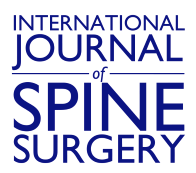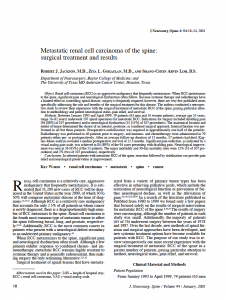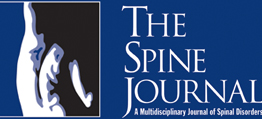
Abstract
Introduction: There is increasing interest in the role of cervical total disc replacement (TDR) as an alternative to anterior cervical discectomy and fusion (ACDF). Multiple prospective randomized studies with minimum 2 year follow-up have shown TDR to be at least as safe and effective as ACDF in treating symptomatic degenerative disc disease at a single level. The purpose of this study was to compare outcomes of cervical TDR using the Mobi-C® with ACDF at 5-year follow-up.
Methods: This prospective, randomized, controlled trial was conducted as a Food and Drug Administration regulated Investigational Device Exemption trial across 23 centers with 245 patients randomized (2:1) to receive TDR with Mobi-C® Cervical Disc Prosthesis or ACDF with anterior plate and allograft. Outcome assessments included a composite overall success score, Neck Disability Index (NDI), visual analog scales (VAS) assessing neck and arm pain, Short Form-12 (SF-12) health survey, patient satisfaction, major complications, subsequent surgery, segmental range of motion, and adjacent segment degeneration.
Results: The 60-month follow-up rate was 85.5% for the TDR group and 78.9% for the ACDF group. The composite overall success was 61.9% with TDR vs. 52.2% with ACDF, demonstrating statistical non-inferiority. Improvements in NDI, VAS neck and arm pain, and SF-12 scores were similar between groups and were maintained from earlier follow-up through 60 months. There was no significant difference between TDR and ACDF in adverse events or major complications. Range of motion was maintained with TDR through 60 months. Device-related subsequent surgeries (TDR: 3.0%, ACDF: 11.1%, p<0.02) and adjacent segment degeneration at the superior level (TDR: 37.1%, ACDF: 54.7%, p<0.03) were significantly lower for TDR patients.
Conclusions: Five-year results demonstrate the safety and efficacy of TDR with the Mobi-C as a viable alternative to ACDF with the potential advantage of lower rates of reoperation and adjacent segment degeneration, in the treatment of one-level symptomatic cervical degenerative disc disease.
To Read The Full Article Click Here
DOI: 10.14444/3010





